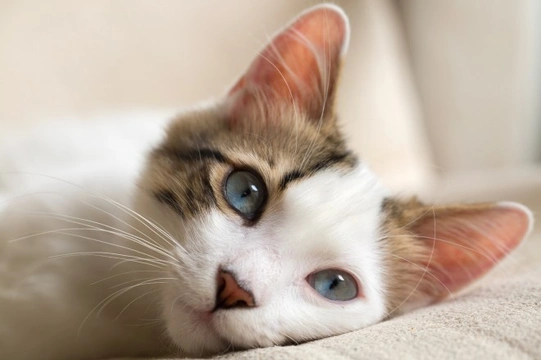
Eight more interesting cat facts that you probably don’t know
The cat is a regal and ancient creature that for many millennia, has lived side by side with humans in a fully symbiotic relationship while still retaining a high degree of independence. Even the most cuddly and sofa-bound of domestic cats has the heart of a lion, and the behaviour and personality of the cat is something that has not changed a lot over the centuries, with cats not having ever have become as fully domesticated and reliant upon humans as dogs are.
Cats are almost mystical in terms of their personalities and lifestyles, and of course, were worshipped by the ancient Egyptians as gods, something that cats have never forgotten! However much you think you know about cats, the chances are that you still have something to learn… And so with this in mind, here is a selection of eight top cat facts that even the most enthusiastic of cat lovers do not generally know!
1. Cats have fingerprints on their nose…
Ok, well not actually fingerprints, because that would be weird! But the patterning on the nose of each and every cat is as unique as the human fingerprint, and as such, no two cat’s noses are 100% alike.
2. Head rubbing is a sign of possession
Not possession as in spiritual possession, but if your cat loves to rub their head onto you and possibly, some of your furniture, this is your cat’s way of not only showing (and demanding) affection, but as marking you out as theirs! When cats rub their heads onto things, they transfer pheromones from the scent glands on the side of the face, leaving a distinctive scent imprint that makes their things (and their people) smell like them, in a form of territorial marking.
3. Cats offer you their prey out of respect and love
If your cat is apt to drop a half-dead mouse in your lap, love and respect are probably the last things on your mind, and you’re likely wondering what on earth you did to deserve this horror! But coming from a cat, offering up the prey that they diligently caught to another person (or cat) is the highest form of respect, and a huge demonstration of love and affection. Telling your cat off can actually make hunting and presenting you with prey worse, as this tells your cat that you were unimpressed with their offering, and that they should try harder!
4. Cats have a natural homing radar
Cats have an excellent sense of direction, and very rarely get lost. Most cats that go missing have become trapped in a building or other enclosed space, rather than simply having gone too far from home and been unable to find their way back. The cat has a natural homing instinct, just like birds do, that allows them to find their way home over relatively long distances, which is why sometimes you will hear of a family that has moved home with a cat losing the cat, and the cat turning up at some later date at their old address, even if this is some miles away.
5. Black cats get a raw deal
Black cats are among the most affectionate, entertaining and loving of all cats, but they are also exponentially less likely to be bought or adopted than cats of other colours. Cat charities and rehoming shelters will soon tell you that black cats are the hardest to rehome, often waiting the longest time to catch someone’s eye.
6. Cats have highly muscular ears
The ears of the cat can rotate up to 180 degrees in one direction, and can do so up to ten times faster than any dog breed! There are 32 muscles in each ear of the cat, and as well as being used for hearing and picking up distant sounds, the position of your cat’s ears can also tell you a lot about the mood that your cat is in!
7. Chocolate is toxic to cats
Most people know that chocolate is a potential toxin for our canine companions, but fewer people know that chocolate is also toxic to cats. Cats do not have a great sense of taste for sweet flavours, so are unlikely to seek out chocolate as their favourite treat, so this rarely becomes a problem. However, it is worth bearing in mind that cats cannot have chocolate, in case you find yourself in the presence of the odd cat that would enjoy it!
8. Cats lose their baby teeth
The development of adult teeth and losing the baby teeth is something that again, we most commonly associate with dogs, but cats too get two sets of teeth during their lifetime. As they reach adulthood they will begin to lose their kitten teeth to make room for their adult gnashers, but as most baby teeth are swallowed when eating, you are unlikely to see any of your cat’s baby teeth once they are done with them!



